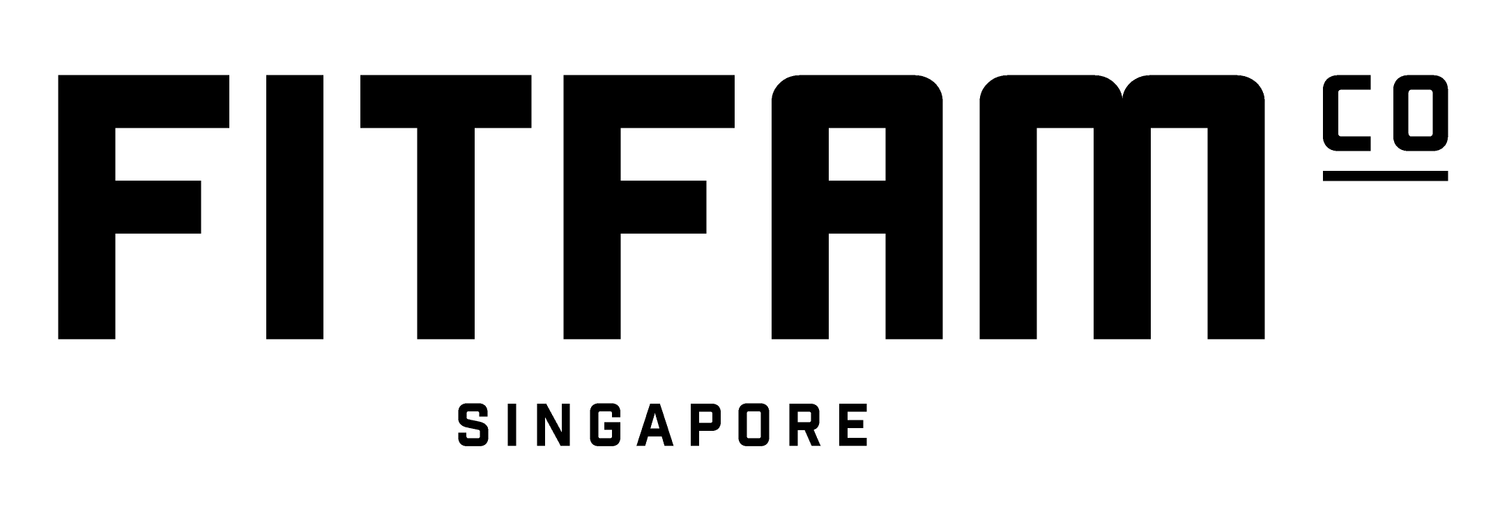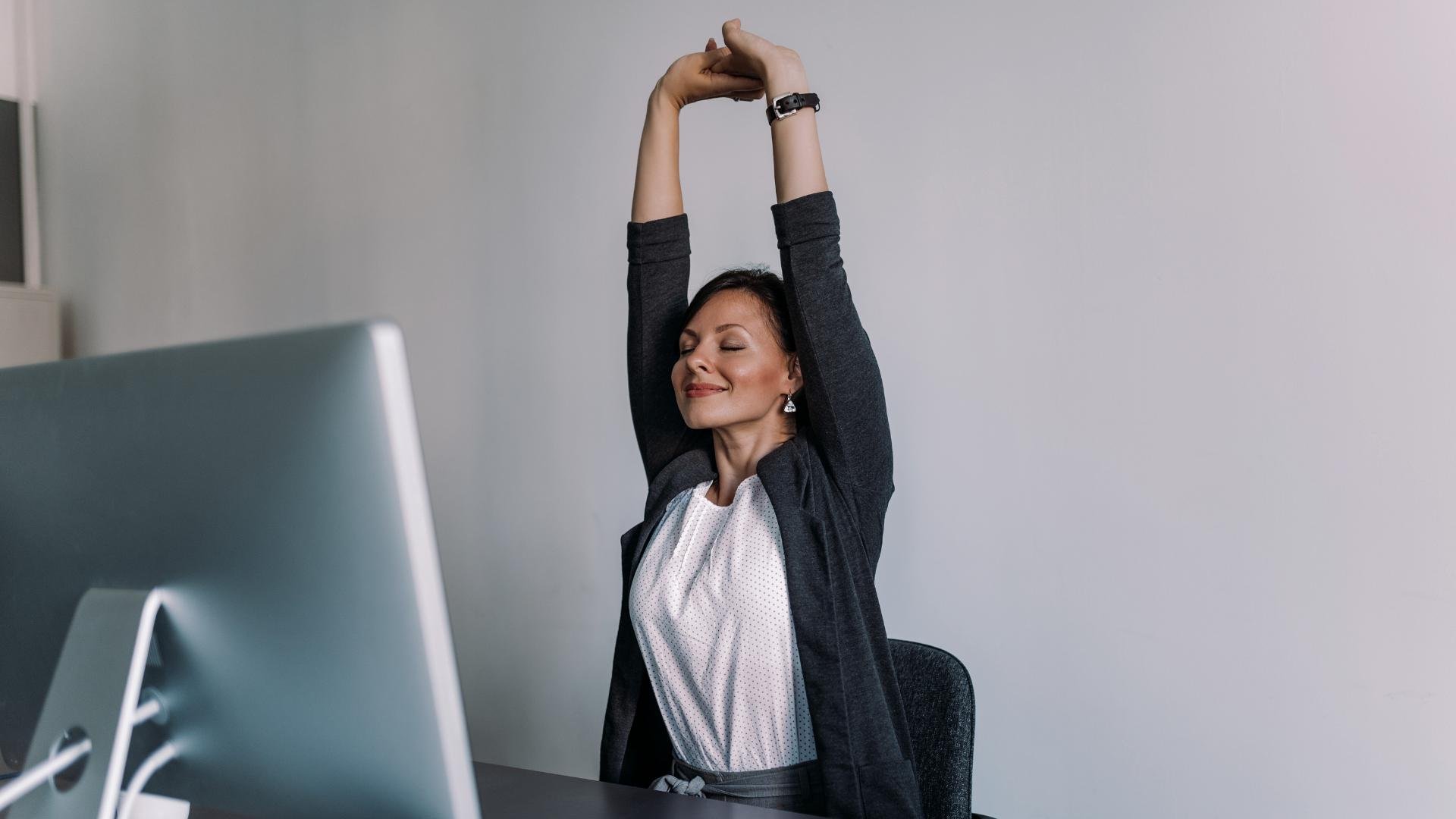Combat Sedentary Lifestyle: 5 Exercises To Do at Your Desk
After hours of sitting day in and day out, our bodies begin to adapt to the sedentary posture we adopt at our desks. Over time, this leads to a buildup of tight hips, sore backs, and stiff necks—common discomforts that affect our ability to move freely and perform daily tasks with ease. These physical issues don’t just interfere with our comfort, they can also decrease our overall quality of life, making us feel sluggish, stressed, and less productive. Prolonged sitting is linked to decreased circulation, muscle imbalances, and increased risk of chronic pain, making it harder to stay focused and energized throughout the day.
However, regular movement—whether it's stretching, strengthening, or just getting your blood flowing, does wonders for your body and mind. It helps improve circulation, increase energy levels, reduce stress, and even enhance cognitive function. Essentially correcting the issues that prolonged sitting can cause, which is why it’s so important to find ways to move throughout your workday, even if you're glued to a desk.
In this blog, we’ll walk you through five simple and effective desk exercises that can be easily incorporated into your routine. These quick movements can be done in short bursts throughout the day—requiring only a few minutes, minimal space, and no special gear. By incorporating these exercises, you'll not only feel better physically but also experience increased focus, improved mental clarity, and a boost in overall productivity. Whether you’re at your desk for hours on end or working from home, these exercises are your ticket to staying sharp and feeling great all day long.
Important Reminder:
Before starting these exercises, consult a healthcare professional, especially if you have any existing medical conditions or injuries, to ensure they are safe for you. Also, when performing chair exercises, use a stable, non-rolling chair to avoid accidents.
1. Bodyweight Squats: Boost Your Energy and Leg Strength
Why It Works:
Long hours of sitting can cause your glutes, hamstrings, and hip muscles to weaken and tighten, leading to poor posture and discomfort. Bodyweight squats are a powerful way to activate and strengthen these key muscles, helping you move better and feel more energized.
Benefits:
Strengthen key muscles: Squats target your glutes, hamstrings, and quads, which are essential for posture and mobility.
Improve hip mobility: Squats stretch and strengthen the hip flexors, helping to reverse the tightness caused by sitting.
Promote better posture: Engages your core and back, helping you maintain an upright position, reducing the risk of slouching.
How to Do It:
Stand with your feet shoulder-width apart.
Push your hips back and lower your body as if sitting into a chair, keeping your chest up and your back straight.
Lower until your thighs are parallel to the ground (or deeper if possible), then press through your heels to return to standing.
Repeat for 10–15 reps.
2. Side Lunges: Stretch and Strengthen Your Hips and Legs
Why It Works:
Sitting for long periods can make your hips and legs stiff and weak. Side lunges target the muscles that are often neglected by sitting—such as your hip abductors and inner thighs—while improving balance and flexibility.
Benefits:
Activate the hips and thighs: Due to the lateral (side to side) movement that the side lunges provide, it strengthens and stretches the hip abductors, glutes, quads, and inner thighs.
Improve leg strength and balance: This exercise helps with stability and mobility, crucial for everyday movements like walking, climbing stairs, and standing up from a chair.
Promote knee health: Side lunges help align the knees properly and prevent discomfort by reinforcing correct movement patterns.
How to Do It:
Stand with your feet hip-width apart.
Step one leg out to the side and bend that knee into a deep lunge, keeping your chest upright.
Keep the other leg straight and press through the heel of the lunging leg to return to standing.
Repeat on the other side for 10–12 reps per leg.
3. Snow Angels (Seated or Standing): Open Your Chest and Improve Posture
Why It Works:
Sitting for extended periods often causes rounded shoulders and upper back stiffness, contributing to "tech neck" or poor posture. Snow angels help open up the chest, engage the upper back muscles, and improve shoulder mobility to prevent back pain at work.
Benefits:
Stretch and activate the chest and upper back: Snow angels stretch tight chest muscles and activate the rhomboids and traps in your upper back, helping to reverse the effects of slouching.
Improve posture: This movement encourages proper spinal alignment and helps you sit and stand taller.
Strengthen shoulder stabilisers: It targets the muscles around your shoulder blades (scapular stabilisers), which are crucial for preventing neck and shoulder pain.
How to Do It:
Seated option: Sit upright at the edge of your chair with feet flat on the floor. Raise your arms overhead, then move them outward in a snow angel motion, squeezing your shoulder blades together.
Standing option: Stand with feet hip-width apart, arms out in front. Raise your arms outward and overhead, squeezing your shoulder blades together. Repeat for 10–15 reps.
4. Chair Crunch Kicks: Strengthen Your Core and Relieve Leg Stiffness
Why It Works
Sitting for long periods can weaken your core, cause tight hips, and reduce circulation in your legs. Chair crunch kicks are a great exercise for activating the core, stretching the hip flexors, and improving blood flow—all while staying seated.
Benefits:
Activate the core: Chair crunch kicks engage your abs and obliques, strengthening your core muscles, which helps with posture and stability.
Stretch and strengthen the hip flexors: The kicking motion helps release tension in the hip flexors and quads, reducing stiffness and discomfort.
Boost circulation: Encourages blood flow in the legs, helping to prevent numbness or swelling caused by prolonged sitting.
Support better posture: Engages the muscles that stabilise the spine, helping you sit upright and reduce the tendency to slouch.
How to Do It:
Sit tall in your chair with feet flat and back straight.
Lift one leg and bring your knee toward your chest while slightly crunching your upper body toward the lifted knee.
Extend your leg straight out, then bring it back toward your chest and lower it.
Repeat on the other side for 10–12 reps per leg.
5. Seated Leg Extensions: Improve Circulation and Strengthen Your Legs
Why It Works:
Sitting for long periods can lead to poor circulation and weak leg muscles. Seated leg extensions are a simple, effective way to engage your leg muscles, increase blood flow, and combat stiffness, all while remaining seated at your desk.
Benefits:
Increase circulation: By extending your legs, you help boost blood flow to your lower limbs, reducing the risk of swelling and discomfort.
Strengthen your quadriceps: This exercise targets the quadriceps (front of the thigh), which are often underused while sitting for long stretches.
Improve knee health: Regularly strengthening the quads can help support the knees and prevent joint pain or injury.
Easy to do: No need to stand up or move from your desk—just a simple leg extension that can be done while seated.
How to Do It:
Sit tall in your chair with your back straight and feet flat on the floor.
Slowly extend one leg straight out in front of you, keeping it level with your hip. Hold the position for a second at the top.
Lower the leg back down to the starting position.
Repeat for 10–12 reps on each leg.
Bonus Tip: To increase intensity, try holding the extended leg for a few seconds longer, or add small ankle weights to challenge your muscles even more.
Incorporating these five exercises into your daily routine can make a big difference in how you feel during and after long hours at your desk. Want more ways to shake off that desk-bound stiffness? Check out our Top 5 Stretches that you can do—even when you're glued to your desk!
The General Benefits of Desk Exercise: Feel Better, Perform Better
Incorporating simple desk exercises into your workday can significantly enhance your overall well-being. These movements not only improve posture, reduce stiffness, and strengthen key muscles but also boost energy levels and sharpen focus. By increasing blood flow to your muscles and brain, exercise helps you stay alert and productive throughout the day. Physical activity also triggers the release of endorphins, reducing stress, elevating your mood, and sparking creativity. Beyond these immediate benefits, regular movement helps counteract the harmful effects of prolonged sitting, lowering the risk of chronic conditions like heart disease and diabetes. Whether it’s a quick activity to reset your mind or a proactive step toward long-term health, desk exercises are a simple yet impactful way to feel and perform your best.
When to Do These Desk Exercises
Every Hour: Set an alarm to remind yourself to perform one of these exercises every 30–60 minutes. Just a couple of minutes of movement can alleviate stiffness and boost energy.
During Meetings or Breaks: Sneak in a quick set while on calls or during breaks—these exercises are discreet and can be done without leaving your desk.
After Lunch or Meetings: Refresh your body and mind with a quick set to combat the afternoon slump.
As a general guideline, you can do one set (12-15 reps) of each of the 5 exercises every hour.
Conclusion: Combat Sedentary Lifestyle and Boost Productivity at Work
Incorporating simple desk exercises into your workday doesn’t just help you stay physically fit—it boosts your energy, enhances your mood, and sharpens your focus, all of which are essential for staying productive and mentally sharp in a corporate setting. Prolonged sitting can lead to discomfort, muscle imbalances, and stress, but with just a few minutes of movement throughout the day, you can combat these negative effects and create a healthier, more balanced routine.
Looking for fun and visual examples? Don’t worry—we’ve got you covered! Check out our blog here for the ultimate stretches tailored for those working from home. We've paired them with easy-to-follow instructions with some helpful videos to guide you along the way!
Remember, staying active doesn’t mean you have to hit the gym during the workday. Small, consistent movements add up and can have a big impact on your overall health, happiness, and performance. So, set a timer, take those breaks, and make desk exercises a regular part of your workday routine. Your body and mind will thank you!
For personalized guidance or support, consider working with a fitness professional at FITFAMCO. Whether you need personal training, nutritional advice, or rehabilitation to get back on track, we’re here to help you achieve your health and fitness goals.
Contact us today to learn more about our programs and how we can help you lead a healthier, happier life. Let's achieve your wellness goals together!
— Written by our trainer, Mark.







